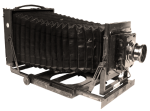Maintenance Verses New Technology
When our system gets out of whack and we go to the doctor. Though most of the time they are just eliminating possibilities and treating symptoms. The technology and equipment we use every day needs something else. It needs to either work or someone has to to be able to fix it. That is where a decent and experienced maintenance technician comes in.
Analog Equipment
When the older equipment I use to transfer audio and visual media breaks down, often a service manual can be tracked down to help find the fault. I try to keep a copy of every manual I need on hand. The only problem may be sourcing the parts to get it working again. If the exact replacement part is not available often a substitute can be “engineered” enough to get the unit working. Though in some cases this is just not possible. That is why I may grab any similar units on offer to use for spare parts.
Quite often with older analog equipment repairs can be fairly quickly and easily made using not much more than instinct and experience. With a 45 year old tape recorder recently I didn’t even need to go to the manual to work out the problem when I could smell something burning. And because of past experience with this machine I had a pretty good idea where to find the problem, a few parts replaced a week later fixed that.
Digital Technology
Frankly, being an older analog techie, anything digital scares me to the core. I love what you can do with it, but when it goes wrong it is often very difficult to get it going again properly. When it breaks down it can be cheaper and easier to replace it. Unfortunately by that time there may be no spare parts available and not much chance of finding a near enough substitute.
Many people by then will be able to justify an upgrade to the latest model. Indeed, at about the time digital equipment appeared so did a manufacturing concept called “planned obsolescence” also appear. At one time generally speaking in the analog past things were designed and built to last. Audio visual equipment was built solidly and made to be reliable. The very reason why some early equipment is still running and can be restored today.
Solid construction had another advantage. It meant that it ran smoothly and generally contributed to performance. One result, that a recording might well rival what could be done with some digital equipment. Another, that what you could do was more flexible. Sometimes even simply because things were more accessible.
Maybe it is just as well medical science does not work that way with us. The occasional analysis and add on black or silver box should aught to be enough!


